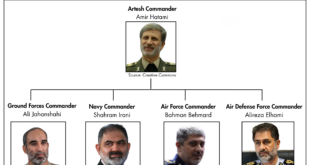 Iran and Venezuela are planning to invest $4 billion in a joint project in the South American country’s heavy-crude-producing Orinoco Belt. Venezuelan state oil firm PDVSA said on its website that the joint investment would be made in the Ayacucho 7 block, which had an estimated 31 billion of the 1.3 trillion barrels of extra-heavy crude believed to exist in the 55,000-sq. km. Orinoco Belt, located in east-central Venezuela.
Iran and Venezuela are planning to invest $4 billion in a joint project in the South American country’s heavy-crude-producing Orinoco Belt. Venezuelan state oil firm PDVSA said on its website that the joint investment would be made in the Ayacucho 7 block, which had an estimated 31 billion of the 1.3 trillion barrels of extra-heavy crude believed to exist in the 55,000-sq. km. Orinoco Belt, located in east-central Venezuela.
The president of PDVSA, Energy Minister Rafael Ramirez, said in the statement that “the work of certifying (the reserves) is being carried out with great success” and that oil production in the Ayacucho 7 Block is expected to begin within two years.
The joint investment plan is one of a series of 33 bilateral energy accords that Venezuela and Iran – large exporting countries whose governments both condemn US “imperialism” – have signed in recent years.
Included in these agreements is the creation of a bilateral and international company, “the product of the synergy” between PDVSA and Iranian state oil firm Petropars “to undertake joint projects in third countries” and build oil tankers, Ramirez said.
The Venezuelan government on May 1 assumed operational control over projects in the Orinoco Belt that produce 600,000 barrels a day, relegating the US firms Chevron, ExxonMobil, Britain’s BP, France’s Total and Norway’s Statoil to the status of minority partners of PDVSA.
Since that move, Venezuelan President Hugo Chavez has been looking to other state oil producers to increase drilling to prove and develop the heavy-oil reserves in the Orinoco region.
State oil companies from several countries, including Argentina, Brazil, China and India have been carrying out a certification process in the region since last August that is expected to conclude in 2008 with the confirmation that the Belt contains some 235 billion barrels of recoverable oil.
In that case, Venezuela’s total reserves would climb to 316 billion barrels, surpassing current world leader Saudi Arabia.
PDVSA experts estimate that at least 20 percent of the Orinoco Belt’s oil wealth is recoverable with available technology. Chavez said, however, that some multinationals did not use that technology in order to keep profits high, settling for extracting between seven and eight percent of the each well’s potential output.
 Eurasia Press & News
Eurasia Press & News
